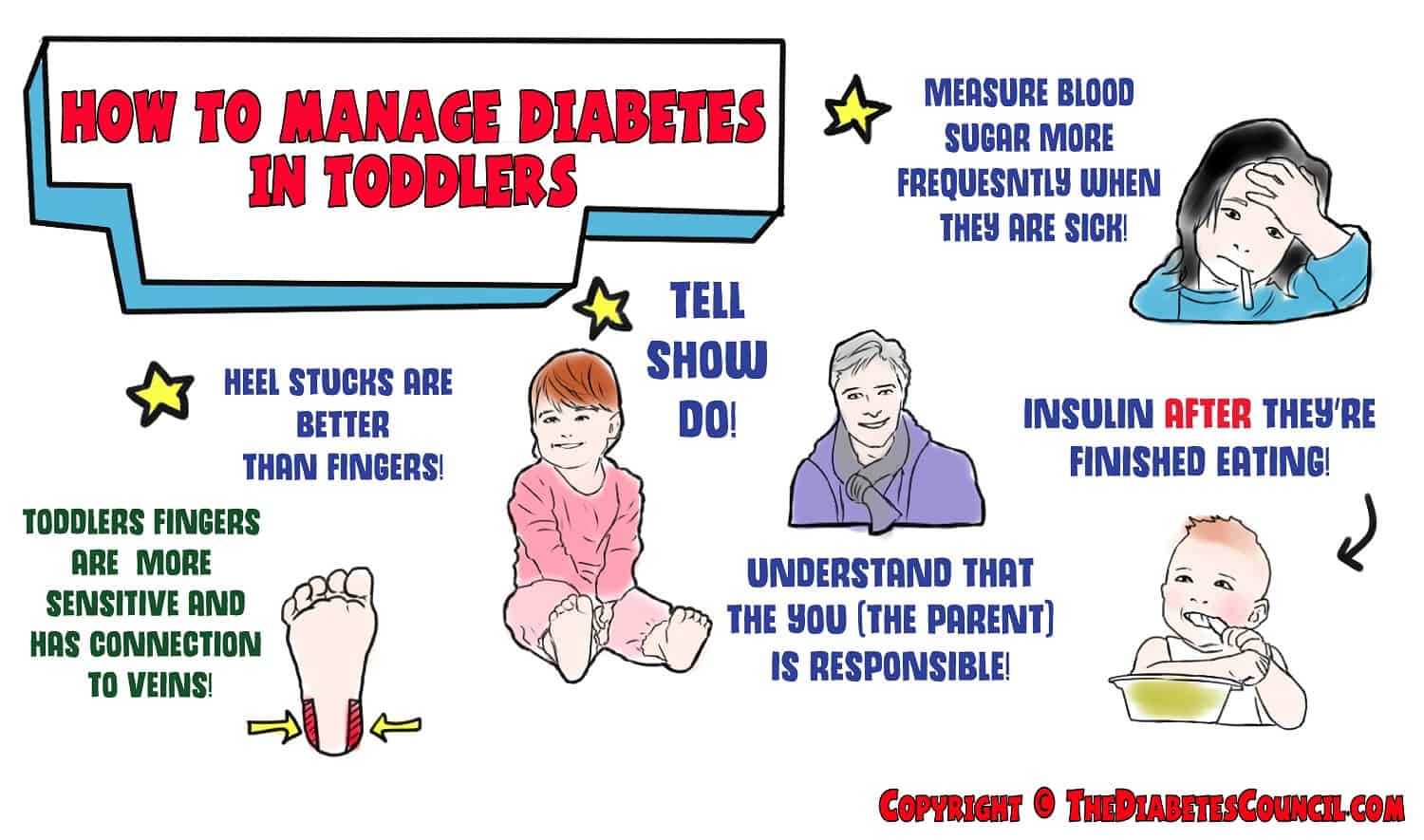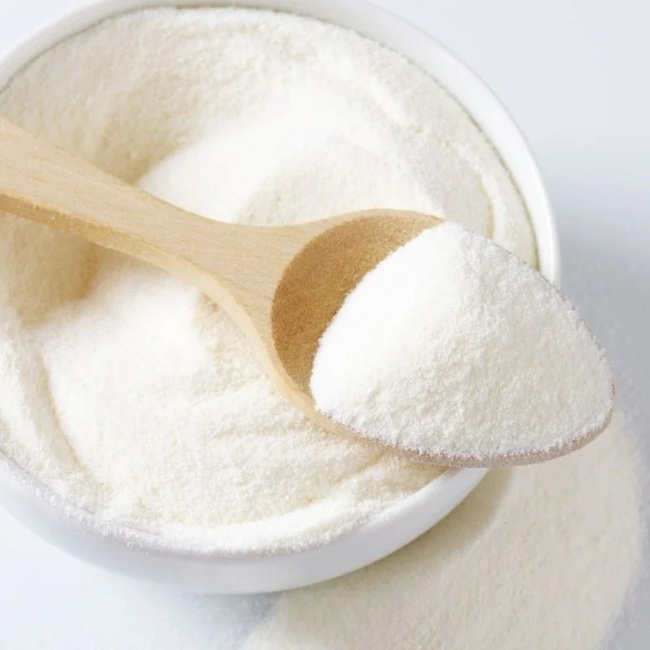
Your heart is in your stomach. Your toddler has just been diagnosed with Type 1 diabetes. What do you do? Where do you begin? How are you going to manage diabetes in a toddler? The fear and overwhelming worry can consume you when you are a parent who has just been informed that their toddler has diabetes. But fear not. Parents who have been there before you share their experiences and expertise to parents of toddlers in your shoes. Educating yourself about diabetes will alleviate your fears. So let’s get started with some tips to help keep your child safe, and at the same time, give you peace of mind.
Contents
Suzanne’s story
When Suzanne contacted TheDiabetesCouncil, she was beside herself. Her son had been admitted to the hospital. Shortly after, she found out that her child had Type 1 diabetes. It was like someone had taken a baseball bat, and hit Suzanne across the head with it. She felt dazed and helpless. On top of all that, she had an overwhelming sense of dread and fear. Her child has Type 1 diabetes, and he will have it for life. We decided to look into some tips to help Suzanne and others.
Our top tips for caring for a toddler with diabetes

Understand that you, (the parents) are the primary person responsible for managing your child’s diabetes
Remember that as the parent, you are the “case manager,” or primary person(s) responsible for your toddler’s diabetes care.
Use the tell, show, do method with toddlers
When you are trying to perform medical procedures on toddlers, a great method to use is the “tell, show, do,” method. As a nurse, we use this method all the time. It lets the child know what you are planning to do, and lets them watch as you show exactly how you would perform the same procedure on yourself. After that, the parent “does” the procedure, such as giving the insulin injection. The less time that is taken to administer the injection, the better. You don’t want to give your toddler too much time to think about it. It’s best to work swiftly and quickly. Always remain calm, and reassure your child throughout any procedure. Always let young children know when you are coming to give them an insulin injection or check their blood glucose, and make sure to give them a big hug when it’s over.
Picky toddlers need insulin after they eat
Picky toddlers don’t eat when you want them to. How many times have you chased your toddler around, trying to get them to take one single bite of food? Toddlers have a mind of their own. They don’t call them “terrible twos” for nothing. That’s why it is so important to administer insulin to a toddler after you have managed to get food in them. This way, you avoid the whole “insulin on board with no food” scenario that could be very dangerous for your toddler with Type 1 diabetes. It also gives you as the parent peace of mind that there is food on board and giving insulin will not unnecessarily or dangerously drop blood glucose levels.
I suggest reading the following articles:
Heel sticks vs. finger sticks
Toddlers have sensitive skin and many nerve endings in the tips of their fingers. You will be much better off if you use the heels of the feet for monitoring of blood glucose, and your toddler will be much happier if you do. The heels of the feet have far fewer nerve endings, so there will be less pain. Anything that you can do to minimize discomfort for your toddler with Type 1 diabetes will be a plus.
Set up a special place for the child’s diabetes care
It is important to perform diabetes care in the same location, preferably away from the toddler’s bedroom or “safe space.” Keep their room as their sanctuary, where they are not subject to blood glucose checks or insulin injections. You could pick a central location in the den. The more your toddler knows the routine, the better they will adapt to their diabetes management procedures.
When injections hurt, minimize the pain for your toddler as much as possible
You can purchase numbing medications if insulin injections or heel sticks seem to hurt your toddler. There are also devices called, “inject ease” that may help your toddler with Type 1 diabetes. This device helps the needle to inject quicker than with a manual approach. This tends to hurt less than manual injections. Ice can also be used to help numb the skin for an injection.
Consider an insulin pump for your toddler
Talk with your toddler’s endocrinologist or pediatrician about getting an insulin pump. Pumps reduce the needle sticks for your toddler to every 3 days, which greatly reduces discomfort.
Pay close attention to your toddler’s behavior
If your toddler is having high or low blood glucose, the first way you may notice this is by looking at your toddler’s behavior. Irritability, acting differently than usual, crying that is not usual, sweating, shaking, and unsteady gait may all be signs of a low blood sugar excursion in your toddler with Type 1 diabetes. If your toddler is overly sleepy or fussy, wetting more diapers than usual, or getting a lot of infections, they may be having high blood glucose.
Treat low blood glucose with the right amount of carbohydrates
You may only need about 5 to 10 grams of carbohydrates in order to treat low blood glucose in your toddler with Type 1 diabetes. You will need a syringe on hand, so that you can administer oral glucose-containing liquids. Never force food or liquids if your toddler is unconscious. You will want to turn your toddler on their side, and call 911. You can use a glucagon pen if you have one prescribed for your toddler. Some cake icing gel could be used to rub into the skin on the inside of the cheek. At any rate, call 911 prior to trying any of these other methods.
Increased play requires an increase in carbohydrate intake
Don’t forget that when your toddler is at play, they may require more carbohydrates than when they are not. Multiple small meals and snacks are required for a busy toddler with Type 1 diabetes.
Foster little one’s independence by letting them help with blood sugar checks and other tasks
Just because your toddler with Type 1 diabetes is a little tyke doesn’t mean that they can’t help with a few things. If you let your child pick from two sites to have his blood sugar checked, you are then giving him or her a choice. Often having a choice in care helps your child to be more engaged in his or her own healthcare.
Toddlers with diabetes need more blood glucose monitoring when they are sick
Just like when adults with diabetes need more blood glucose checks when they are sick, so does your toddler with Type 1 diabetes. Sickness is a stress on the body, and being sick tends to cause blood glucose to elevate. You will want to push fluids, and have your child drink extra. A decrease in the amount of wet diapers may clue you in to high blood glucose. A dry, raspy voice and a dry mouth are also signs of high blood glucose in your toddler.
Have a reward for your toddler with diabetes, but make it something other than food
You could use many things as a reward for your toddler when they do well with their diabetes management. Anything that the child may like, such as stickers, stuffed animals, other toys, a special outing, or extra playtime may serve as a great reward for your toddler with Type 1 diabetes. It often depends on the child as to what will work best for a reward. However, you should always avoid using food as a reward if you have a child with diabetes.
Get a team of support surrounding you and your toddler with Type 1 diabetes
A care team when you have a toddler with Type 1 diabetes is a must. Your pediatrician, pediatric endocrinologist, Registered Dietician, and Certified Diabetes Educators are some of the important people you will want on your child’s care team. It’s good to have doctors available from many different specialties, mental health professionals, child development specialists and other professionals as needed. Most pediatric endocrinology offices will have a wide array of resources available. You will want to book appointments with your child’s endocrinologist at least four times per year. Speak openly with your providers about your fears, needs, and questions.
Finding other parents who understand what you are going through is also a plus. There may be support groups if you live in a fairly populated area. If you can’t find a local support group, why not start your own? Other parents of toddlers or children with Type 1 diabetes may be looking for support, as well.
Teach other children and family members about your toddler’s diabetes
Your family members and the child’s other siblings should also be on your child’s care team. Make healthy eating a family affair, because a diabetes friendly diet is a healthy diet. Other family members can share the care, and this way Mom doesn’t always end up being the caregiver. Everyone in the family should be aware of steps to take and what to do in case of low or high blood glucose.
The Diabetes Research Institute Foundation’s PEP Squad
The Diabetes Research Institute Foundation has a resource for parents of children with Type 1 diabetes called the PEP Squad. PEP stands for “Parents Empowering Parents.” Whatever support you reach out for as a parent of a toddler with Type 1 diabetes, take care to address the emotional aspects of diabetes care for your toddler.1
Keep a regular routine, and involve your toddler with diabetes in all usual activities for this age group
Your toddler with Type 1 diabetes is a toddler first. They should be praised when they help with their diabetes care. A positive attitude will go a long way. When blood glucose is out of range, keep your facial expressions neutral. Later on, you will want your child to be honest about their blood glucose numbers, and letting them know that it’s ok to have blood glucose out of range will also go a long way in helping them to be honest in the future. Remember to focus on life, not just diabetes. Let your toddler be a toddler. If they are invited to a birthday party, let them go and let them eat what the other kids eat. Speak with your healthcare provider about adjusting insulin for the occasion when your toddler has a treat.2
Basic day-to-day care for the toddler with Type 1 diabetes
A toddler with Type 1 diabetes does not make any insulin of their own, therefore they require insulin to survive for the rest of their life. Type 1 diabetes currently has no cure, and less than 1 percent of all Type 1 diabetics are toddler age. Taking care of a toddler with diabetes is no small task. It requires a village to raise a child, and this is certainly no different for a toddler with Type 1 diabetes.
Emphasis is placed on reducing acute and chronic problems from diabetes, while helping the toddler to have a typical childhood as much as possible. Care should be taken with their emotional and social development, as well as with their physical development. In order for this to happen, parents try to keep blood sugars as close to normal as possible for their little ones.
General guidelines for toddlers with Type 1 diabetes:
- Toddlers with Type 1 diabetes should be given their insulin as prescribed.
- Toddlers with Type 1 diabetes should eat a balanced, healthy diet, with regular meals and snacks, with attention paid to the amount of carbohydrates in each meal.
- Toddlers with Type 1 diabetes should check their blood glucose levels a few times a day, depending on their doctor’s orders.
- Toddlers with Type 1 diabetes should get regular exercise and physical activity.
Toddlers with Type 1 diabetes must take insulin to survive
For a toddler with Type 1 diabetes, taking insulin as prescribed is a must for life. The toddler will generally be taking several insulin injections (2 or more) per day, or they could be on an insulin pump for insulin delivery. Insulin is the only medication that can keep a toddler with Type 1 diabetes blood sugar in a safe range. Without insulin, a toddler with Type 1 diabetes cannot use glucose for energy.
The diabetes care team for your toddler with diabetes will determine the amount and types of insulin that your toddler needs with relation to meals and snacks, and for a safe overnights sleep. There will likely be multiple injections required daily, unless your toddler is using an insulin pump, where the needle is changed out every three days.
It’s not easy to get your toddler to stick to the regular routines required for a busy insulin and diabetes management schedule. Toddlers do generally like to have a routine, so having some set schedules is usually a good thing with this age group. Insulin will always have to be given after the toddler has eaten, because you never know when a picky toddler might decide to refuse to eat.
Thankfully, the insulin injections of today are given with very small gauge needles, so the pain is minimized in comparison to insulin injections of the past. Work closely with your toddler’s diabetes care team to determine where you will give the injections, when you will give them, and how much you will be giving your toddler with Type 1 diabetes.
With regular insulin, a healthy diet, activity, and daily care, your child can indeed live healthy with diabetes. Dosage is very small for the toddler, and is usually 0.25 to 0.5 units per kilogram. Dosages are titrated up until blood glucose is in the desired target range. Speak with your child’s doctor about individual target ranges and dosing. Usually a mix of intermediate acting, rapid or ultra-rapid acting insulin. (NPH, regular, lispro, Humalog). Injections are usually given two times daily, with respect to breakfast and supper. A toddler with Type 1 diabetes may take up to three injections per day.
Ultra-rapid acting lispro may be the best choice for parents of toddlers who are picky eaters. The fast acting nature of this insulin allows the parent to dose the insulin directly after food is eaten, and it brings down the blood glucose for that meal. This is an advanced skill, and a parent should work with their provider to determine the appropriate dosing. The parent may be given a sliding scale for insulin dosing based on blood glucose level.
A healthy diet for your toddler with Type 1 diabetes
Meal planning is of great importance for the toddler with Type 1 diabetes. Your toddler will require a well-balanced diet. It’s not really much different than what other kids their age should be eating, but you will want to pay close attention to carbohydrate contents.
It’s a bit of a balancing act that parents do when trying to plan the meals, give the insulin based on the meals while paying attention to the child’s activity level. At any rate, insulin is given in tiny amounts to toddlers with Type 1 diabetes. Parents learn to be the toddler’s chief diabetes manager, learn to count carbohydrates, and learn to balance their toddler’s food intake, activity, and insulin requirements.
Pay close attention in ensuring a regular meal schedule. The child should always have breakfast, lunch, and supper, and between meal snacks. The current thought is not to restrict certain foods, and to allow the child to eat as if he did not have diabetes at friend’s birthday parties and family celebrations. Insulin can be adjusted for these occasions by working closely with the provider. The goal is to maximize nutrients, while reducing processed carbohydrates and sugars that affect blood glucose.
Checking a toddler’s blood glucose
Blood sugar levels will be a part of self-management for the parent of the toddler with Type 1 diabetes. Knowing the blood glucose level allows the parent to act accordingly by adjusting insulin, giving more carbohydrates, and in general managing high and low blood glucose levels.
Blood glucose levels will be checked periodically, depending on the child’s treatment plan. Most toddlers will have their blood glucose monitored at least four times per day. If there is a suspected high or low blood glucose, the parent may have to check the toddler’s blood glucose more often. The child will see the doctor every three months for a measure of his or her average blood glucose level, or A1C. 3
The toddler with Type 1 diabetes and exercise
A toddler is into everything, perpetual, and always in motion. You can count on high energy use, meaning that more glucose use by body cells. Activity is always a consideration when working with the parent of a toddler with Type 1 diabetes, and developing a care plan. Still, a toddler will have days where they are less active, and the parent will learn to adjust for those times as well. For extra activities above and beyond the normal play routine, an extra snack is provided. Exercise is always encouraged due to it has many health related benefits such as maintaining weight, reducing blood pressure, blood cholesterol, and overall body organ health.
Parents should also feel good that insulin will work better in their child’s body if they are using their muscles regularly during daily exercise activities. Toddlers should be active at least 60 minutes a day, although this is most often not a problem to achieve. Most toddlers are on the go.
Safety for the toddler during physical activity:
- Carry a snack
- Carry water for hydration
- Carry glucose
- Carry supplies for checking blood glucose
- Let caretakers and others know about the child’s Type 1 diabetes
- Wear a medical identification
- Talk with your toddler’s Care Team to plan how to manage during exercise, and what to do for low or high blood sugars
Stress and coping as parents of a toddler with Type 1 diabetes
Parents should seek help from the child’s diabetes care team, and outside resources, such as the JDRF (Juvenile Diabetes Research Foundation), or other parent support groups. The pediatric endocrinology office is a great place to start to look for support. You can also search for support groups in your area on social media, such as Facebook.
The journey faced by parents of toddlers with Type 1 diabetes is difficult, and filled with many hills and valleys, pitfalls, heartaches, and successes. It is the case with rearing a toddler in general, but doubly so with rearing a toddler with Type 1 diabetes. The parent guides the child, while teaching them self-management skills on the way throughout the life cycle. With a wide variety of health professionals, community and family supports, the child grows and flourishes, as it should be. So if you are a parent of a toddler with diabetes, it might seem very overwhelming to you. But remember to reach out to others for support, and learn simpler ways to manage in your day to day life.
More reading material:
Over to you
Let us know what you think about this article on toddlers with Type 1 diabetes. We look forward to hearing the reactions of parents who have toddlers with Type 1 diabetes. Hopefully, we have provided some valuable tips and insights here for their journey.
TheDiabetesCouncil Article | Reviewed by Dr. Christine Traxler MD on May 29, 2020









